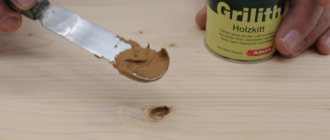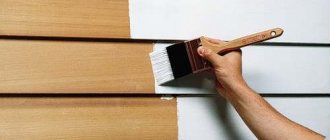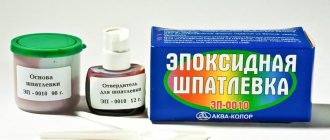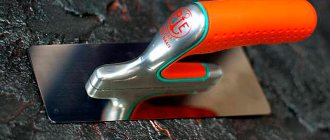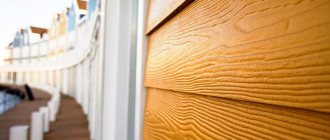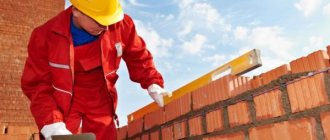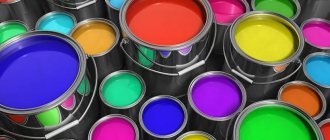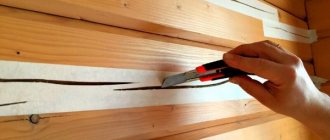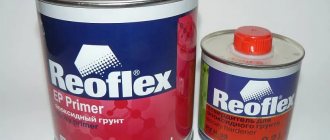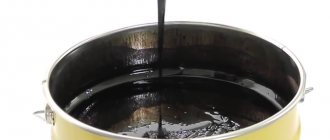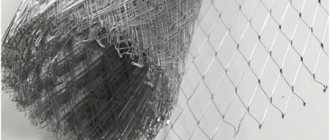MesterulManole
13496 0 4
MesterulManole October 25, 2016Specialization: many years of experience in finishing works of residential and office premises, summer houses, country cottages, etc. Hobby: cycling in all its forms
Ready-made putty and tools for its application
Greetings. In this article I will talk about what metal putty is and how it is used for its intended purpose . I hope the topic of the article will be of interest to many, since leveling metal surfaces requires the use of special materials with mandatory adherence to the technology of their application.
Scope of application of metal putties
Metal putties can be used for surfaces made of ferrous and non-ferrous metals, as well as galvanized products. Some types are also suitable for galvanized surfaces. Putties are used for the following operations:
- leveling: the composition fills dents, cracks and scratches;
- strengthening surfaces by increasing the thickness of the product;
- sealing holes;
- anti-corrosion treatment of surfaces, including those already affected by rust.
Metal putties are wear-resistant and can withstand weathering, moisture, frost and other adverse influences. They are usually applied before painting.
Metal putty is purchased for repair and protection against corrosion of metal building structures and elements: fences, railings, stairs, metal garages and gates, door hinges, etc. Such putties are also useful for processing metal pipelines.
Metal putties are in demand not only in construction. Thus, they are actively used in the repair of cars, water transport, industrial equipment, and restoration of the surface of various metal products.
Choice of solution
A composition of unknown origin cannot be used for plastering stoves under any circumstances.
The fact is that during operation of the furnace its walls will become very hot. As a result of temperature deformations, ordinary plaster will begin to crack and literally after two to three months will begin to fall off.
You can prepare a refractory composition for putty according to proven folk recipes. It is worth noting that it is advisable to use such solutions only when arranging a small stove in the country - it will not be possible to make an externally presentable object (stove) with such putty.
The second option is to purchase a ready-made factory mixture. Industrial fireproof putty will be the best option for a novice builder. The instructions will help you maintain the proportions correctly and not make mistakes when preparing the solution. Finishing work using industrial fireproof putty is much easier to do, and the result will be better. True, this mixture costs a little more.
Polyester putties
Polyester putties are very popular today, despite the fact that their price is quite high. But the cost is compensated by the high qualities of the material.
The basis of such compositions are unsaturated polyester resins. The composition may also include various fillers: fiberglass, aluminum powder, glass microgranules.
Advantages of polyester putties:
- low shrinkage (about 0.5%), due to which the composition can be applied in several layers and without fear of cracks;
- good grip on the surface;
- strength, resistance to external influences;
- heat resistance: many compositions can withstand up to 100 degrees, and some can withstand much higher values. Thus, the high-temperature putty ROBERLO SN96 can withstand up to 250 degrees Celsius (it is usually used for car repairs);
- dry quickly.
The presence of additional components gives polyester putties special properties. Thus, compositions with fiberglass filler can be used to seal even fairly large holes in metal. The applied layer has increased strength.
“Aluminum” putty (marked Alu on the packaging) makes the surface of the product more resistant to damage, vibration and vibration. In addition, the composition with aluminum is heat-resistant.
Polyester putties are two-component. They are sold as a set of two containers (or jars), one containing the putty base and the other containing the hardener. These two components must be thoroughly mixed together immediately before use and used within a few minutes.
Using polyester putties, metal surfaces of varying degrees of damage are leveled. With skillful work, the mixture lays out in an even layer. For a better result, you can first use a starting (“coarse”) polyester putty, and then a finishing putty (with a fine fraction) for finishing before painting. There are also universal formulations.
Self-production of heat-resistant mixture
If you are planning to paint your own fireplace, barbecue or heating system in your home, you can try preparing a heat-resistant mixture at home.
The easiest option is to use liquid glass and aluminum powder. This coating will last about five years. Please note that during the first heating after painting there is strong smoke. For safety reasons, this should be done outdoors.
In a similar way, you can get the so-called “silver”. We purchase heat-resistant varnish and strengthen the composition with fine aluminum powder. After mixing, the solution will acquire a rich silvery tint. Serebryanka is not afraid of high temperatures and can easily withstand up to +350 degrees. It has anti-corrosion properties and is applicable on almost all types of metal and non-metallic surfaces.
Epoxy putty
Such putties consist of a solution of epoxy resins and a hardener. They are very popular because in most qualities they are not much inferior to their polyester analogues, and are cheaper than them.
Main characteristics of polyester putties:
- shrinkage rate - only 0.1%;
- strength;
- high adhesion to any type of surface;
- long drying: the composition hardens in 20 minutes, but it takes a day to dry completely.
Epoxy putty is quite fluid. Therefore, to treat vertical surfaces, it is recommended to mix chalk, kaolin or talc into it.
How to prepare the composition yourself
You can prepare putty for the stove yourself. To do this you will need fine sifted sand and medium fat clay.
The dried clay is mixed with sand and lightly salted water is added. After three days of soaking, the clay-sand solution is thoroughly mixed again and they begin to putty the seams or plaster the entire surface of the oven.
There are several nuances to preparing a homemade heat-resistant putty solution.
If you have skinny clay, then instead of salted water, mix the composition with skim milk (without cream). To make the putty white, you can add a little slaked lime to it. The plastered surface can also be whitened with a mixture of crushed chalk and low-fat milk. The durability of this coating is about 10 years.
Pentaphthalic putty
Pentaphthalic varnish acts as a binding component in such putties. The composition also includes fillers, pigments, organic solvent, etc. Such putties are usually inexpensive.
Pentaphthalic putties have a two-component composition (base plus hardener). The degree of shrinkage is quite high - 3-5%, so the scope of application of the composition is limited. It is often used to eliminate minor surface defects on ferrous or primed metal surfaces. Usually the mixture is applied in several thin layers up to 0.5 mm each, the total application thickness is up to 2 mm.
The popular pentaphthalic putty PF-002 takes quite a long time to dry - at a temperature of 20 degrees it will take up to a day. But the composition adheres well to primers and is not fluid. When applied correctly, it forms a smooth layer that is easy to sand. The top of the putty can be coated with pentaphthalic, oil, alkyd-urethane and other paints.
Nitrocellulose putties
They are sold in the form of a ready-made mixture that can be puttied on immediately after opening the container.
Nitro putty has the highest degree of shrinkage - up to 15%. Therefore, it is applied in a very thin layer and, accordingly, is only suitable for repairing minor defects (chips, scratches).
The advantages include fairly quick drying - about two hours. In addition, nitro putties have good resistance to high temperatures.
Source
Properties and composition
The main difference between old and new types of putties is hidden in their chemical composition:
- In the past, mixtures of clay and sand were used to give the finishing material the necessary properties.
- Today the situation has changed somewhat due to the rapid development of the chemical industry - clay has been replaced by inorganic chemical compounds, which are somewhat cheaper and more common than natural clay.
The properties of fireproof putty also differ. First of all, this is due to the uniform heating of the putty over the entire area, which turns the entire surface of the furnace into a kind of radiator. Thanks to this property, the rate of heating of the room significantly increases in the cold season.
At high temperatures, the putty on the stove does not heat up in one place and does not burn out, which protects the finishing material from falling off. Practice shows that the average service life of putty is four years, which is really quite a lot under such operating conditions.
You can always update the putty without dismantling, which is really convenient. Thanks to this property, your stove will always look like new!
Putty for metal for outdoor work
Metal products are often used outdoors; external use regularly leads to the appearance of flaws, cracks, and dents on the surface. Puttying a metal surface makes it possible to remove all existing dents. If the process is carried out correctly, then you get an updated product without any irregularities. After the material has dried, the surface is painted or varnish is applied.
Puttying a metal surface makes it possible to remove all existing dents.
What are its features
You can get an acceptable result only by using high-quality metal putty. There are a number of characteristics that such a product should have. These include:
- Quick-drying property;
- Possessing high rates of adhesion to metal material;
- High degree of elasticity, retained even after completion of the hardening process;
- It lay evenly on the surface;
- Minimum shrinkage level;
- Convenience and ease of application;
- Since metal putty is often used for painting, it is necessary that it be combined with the paint.
Since metal putty is often used for painting, it is necessary that it be combined with the paint.
Why putty metal?
Before deciding how to putty metal, you need to figure out what purpose you should do it for. There may be several reasons for using putty:
- When car parts are scratched, broken, or damaged, they are treated with putty to restore their functionality and extend their service life;
- In order to protect metal surfaces from rust. The putty layer provides excellent protection against the harmful effects of water;
- To create a stronger and thicker layer of metal, putty mixtures can strengthen the surface and make it more reliable.
When car parts are scratched, broken, or damaged, they are treated with putty to restore their functionality and extend their service life.
Preparation of the workplace and selection of equipment
So, let’s assume that we have a garage - let’s look at how to equip it so that we can work efficiently and comfortably.
- The first thing to do is to protect all surfaces from paint when finishing - walls, floors and ceilings. To do this, those planes that need to be insulated can be covered with the most ordinary film.
Example of a paint shop in a garage
Important! Don’t forget to leave (and generally think through) areas for ventilation of the room. Otherwise, in most cases, they remember this at the very last moment, when the first painting begins.
- The second stage is the purchase of a compressor with a spray gun for painting and a melting furnace in which the painted product will be “baked.”
Compressor with spray gun
The compressor must be selected so that the device can operate at high pressure.
As for the melting furnace, of course, you can purchase professional equipment and powder painting technology will be performed much better and faster. However, this option is not affordable for everyone.
Therefore, we will get out of the situation and look for an “economic solution.”
In principle, for heating the heat treatment of applied paint, if factory quality and processing of large parts are not required, an ordinary oven is quite suitable.
- The next step is setting up a spray booth. The chamber is, in fact, a piece of the room in which paint will be applied to the product. What is important to ensure here is the presence of a suction system - so that excess paint is immediately removed outside the working hopper.
Pentaphthalic putty
Pentaphthalic varnish acts as a binding component in such putties. Heat-resistant primer for metal in cans? The composition also includes fillers, pigments, organic solvent, etc.
Such putties are usually inexpensive.
Pentaphthalic putties have a two-component composition (base plus hardener). The degree of shrinkage is quite high - 3-5%, so the scope of application of the composition is limited. It is often used to eliminate minor surface defects on ferrous or primed metal surfaces.
Usually the mixture is applied in several thin layers up to 0.5 mm each, the total application thickness is up to 2 mm.
The popular pentaphthalic putty PF-002 takes quite a long time to dry - at a temperature of 20 degrees it will take up to a day. But the composition adheres well to primers and is not fluid. When applied correctly, it forms a smooth layer that is easy to sand.
The top of the putty can be coated with pentaphthalic, oil, alkyd-urethane and other paints.
Advantages and disadvantages
Heat-resistant putty does not emit substances harmful to health when heated.
Heat-resistant putties have advantages over traditional solutions. They are characterized by high strength when exposed to high temperatures due to the presence of binding fibers and the use of refractory materials.
Positive aspects of use:
- The solution consists of safe components; when the surface is heated, harmful air impurities are not released.
- Putty prepared in compliance with the technology and application rules lasts a long time.
- The mixtures adhere well to the surface of the stove made of various materials; there are varieties that are used for finishing metal.
Disadvantages include higher cost than standard ready-mixes. Such compositions are rarely used as a finishing layer - they need to be painted or tiled.
Types of putties
Various putty mixtures are produced. You can find a large number of them on the construction market; for metal there can be two-component compositions, as well as one-component ones. There is a general separation of mixtures. Each type has its own characteristics, which will be discussed below.
You can find a large number of them on the construction market; for metal there can be two-component compositions, as well as one-component ones.
Polyester
As the name implies, polyesters are used as a base. This is a two-component type, before use of which a hardener is added to the main part of the mixture. Before mixing the two components, the mixture can be stored for a long time.
The following advantages of this type can be highlighted:
- Doesn't shrink;
- High level of adhesion;
- Heat resistant;
- Ease of operation.
There are several mixtures that are suitable for different purposes:
- Finishing agents, which help to level the surface well;
- Fine-grained, they can handle small defects;
- Coarse- and medium-grained, they can cover large flaws; they are used both on a cleaned surface and on the previous putty.
There are powder and fiberglass options on sale. Powdered ones can withstand vibration. For use on straight surfaces. Fiberglass can cover large cracks, but cannot withstand vibration.
If the product will be exposed to high temperatures, then choose heat-resistant polyester putties.
This is a two-component type, before use of which a hardener is added to the main part of the mixture.
Epoxy
Epoxy putty for metal also includes two components. The following positive aspects of the composition can be highlighted:
- Excellent strength;
- Anti-corrosion effect;
- Resistance to chemicals;
- Gives a minimum of shrinkage;
- Possibility of coating with a thick layer;
- High degree of adhesion to any substrate;
- Long service life;
- Can be used directly on the previous coating without applying a primer;
- Reasonable cost;
- Hardening is complete after 8 hours;
- Easy to sand.
Can be used directly over the previous coating without applying a primer.
Nitro putties
Nitro putty can be used immediately; no preparation of the material is required; it consists of one component. Easy to apply, but the shrinkage rate is higher than the previously described types, equal to 15%. A thin layer is obtained that can cover small defects; several layers are applied to improve the result. Before applying putty, you need to treat the product with a primer.
Using burlap or mesh for reinforcement
Before applying the putty mixture to the brick surface, it must be reinforced.
Method 1. In problem areas and into masonry joints, screw 75 mm long self-tapping screws, leaving the head to protrude by 10-15 mm.
Method 2. To prevent the plastered surface from becoming cracked, the walls are covered with burlap. The fabric is first soaked in a liquid clay solution, which will be used to coat the oven. The burlap is glued to the wall, smoothed to prevent the formation of air bubbles.
Alternatively, instead of burlap, you can use a metal mesh with small cells (less than 10x10 mm). To secure it, at the stage of laying the furnace, a wire with a cross-section of 3 mm is laid between the seams.
Polyester putties
Polyester putties are very popular today, despite the fact that their price is quite high. But the cost is compensated by the high qualities of the material.
The basis of such compositions are unsaturated polyester resins. The composition may also include various fillers: fiberglass, aluminum powder, glass microgranules.
Advantages of polyester putties:
- low shrinkage (about 0.5%), due to which the composition can be applied in several layers and without fear of cracks;
- good grip on the surface;
- strength, resistance to external influences;
- heat resistance: many compositions can withstand up to 100 degrees, and some can withstand much higher values. Thus, the high-temperature putty ROBERLO SN96 can withstand up to 250 degrees Celsius (it is usually used for car repairs);
- dry quickly.
The presence of additional components gives polyester putties special properties. Thus, compositions with fiberglass filler can be used to seal even fairly large holes in metal. The applied layer has increased strength.
“Aluminum” putty (marked Alu on the packaging) makes the surface of the product more resistant to damage, vibration and vibration. Heat-resistant primer for metal up to 300 degrees? In addition, the composition with aluminum is heat-resistant.
Polyester putties are two-component. They are sold as a set of two containers (or jars), one containing the putty base and the other containing the hardener. These two components must be thoroughly mixed together immediately before use and used within a few minutes.
Using polyester putties, metal surfaces of varying degrees of damage are leveled. With skillful work, the mixture lays out in an even layer. For a better result, you can first use a starting (“coarse”) polyester putty, and then a finishing putty (with a fine fraction) for finishing for painting.
There are also universal formulations.
Types of putties for metal and their differences
Assortment of consumables for body work in a specialized store
Putty for metal is a product with a paste-like, less often liquid, consistency. By applying the product to metal surfaces, minor defects can be eliminated before subsequent painting.
Consistency of putty, ready for use
According to the composition, putties for leveling metal surfaces are divided into the following types:
- Polyester compounds with low shrinkage and low tendency to crack;
- Epoxy compositions are the most common, since the quality of the finished result is slightly inferior to polyester analogues, while their price is lower;
- Pentaphthalic compositions are characterized by low cost and a high degree of shrinkage (on average 5%);
- Nitro putties are characterized by even greater shrinkage compared to pentaphthalic analogues, and therefore are used to level out minor relief.
Conventionally, all of the listed compositions can be divided into:
- One-component - just open the package, mix and you can apply;
- Two-component - sold in the form of a base and a hardener, which must be mixed until smooth.
What to choose - one-component or two-component formulations
Among the listed modifications, only nitro putties do not require mixing with a hardener. But this composition has more disadvantages than advantages.
For example, such a leveling mixture dries quickly upon contact with air, and therefore, after opening the package, it is better to use it immediately and not leave it for later. In addition, nitro putty, despite fast drying, is characterized by the most intense shrinkage (up to 15%).
Now a few words about two-component compositions. It is enough to add the required amount of hardener to the base, mix thoroughly and the putty is ready. That is, you can prepare exactly as much leveling agent as you need, and not worry about the remainder in the jar drying out.
The most common example of two-component compounds are epoxy putties, which, after drying, have virtually no shrinkage. The problem with epoxy resin mixtures is that they take a long time to dry. That is, if a vertical or inclined surface is leveled, the putty flows off. To prevent the formation of smudges, fillers such as crushed chalk or talc are added to the composition.
A less common two-component composition is polyester putty for metal, which is characterized by low shrinkage and, as a result, the absence of microcracks when drying. Polyester putty in combination with fiberglass allows not only to level depressions on metal surfaces, but also to seal through holes. For greater resistance to vibrations and vibrations, metal powder is added to the mixture.
Old names of putties and new designations
Modern domestic means for leveling metal and their markings:
- PE-00-85 - polyester putty for metal consists of a base (unsaturated polyester resins, fiberglass and metal powder) and a hardener;
- E-4022 and EP-0010 - epoxy putties with the possibility of adding chalk talc or kaolin to prevent the product from running off vertical surfaces;
- PF-002 is a pentaphthalic putty recommended for smoothing out minor defects in metal surfaces;
- NTs-007 and NTs-009 – nitro putty without adding a hardener.
Domestic liquid leveling compounds and method of their application
Classification according to order of application
Level the surface with a plane
The instructions for leveling metal surfaces consist of two main steps:
- filling – rough leveling when deep relief is filled;
- finishing – final leveling for painting.
In accordance with these stages, all putties can be divided into filler and finishing mixtures. How do these mixtures differ from each other, besides their immediate purpose?
As a result of grinding, holes and rubble are visible
Since the function of filler putty is to fill deep relief, the product contains components with a coarse-grained structure. A large filler fraction provides a number of advantages, including:
- Cheaper product, since the price of producing coarse grain filler is more affordable than the cost of producing fine paste;
- Ensuring better adhesion with subsequent layers, since the filler forms a rough surface when drying;
- Simplicity and short terms of leveling the relief, since large grains fill unevenness faster.
Thoroughly clean the surface with a degreaser
The composition of finishing putties includes components with fine grains. This is an elastic paste that is easy to apply and very thick to grind.
Mix the ingredients
The difference between finishing putty and filler is that it is applied in a thin layer of no more than 1 mm. Finishing agents can be used both to form the top leveling layer and to independently level small defects.
The photo shows the application of a leveling layer to the prepared surface.
There is a separate variety on sale - universal putties for metal, which level the relief, but do not require the application of finishing paste. The use of such tools is optimal if the time for processing defects is limited. On the other hand, the use of such means rarely ensures high quality of the finished result.
.
Overview of varieties of SOLID brand putties
Table with the average cost of products of the SOLID and NOVOL brands in the Russian Federation
Why SOLID? The choice is not accidental, since most auto body shops use materials of this brand. Therefore, it will be useful to know what exactly will be used to repair the dent on the body of your car. In addition, the quality of the components of this brand in the Russian Federation is considered standard.
Filling putty containing glass fiber “Glas”
Polyester composition with added fiberglass
The composition is characterized by mechanical strength and high filling capacity. The product is applied in thick layers, which means it is possible to eliminate even deep unevenness.
Despite its high strength, this composition is not elastic enough. Therefore, it is not recommended to use this putty on large surfaces where sheet metal bends (center of door, roof, hood). Ideal areas for application are sills, arches, pillars and other strong, and therefore static, body elements.
“Glas” type putties are recommended for the following works:
- filling deep relief to level the surface;
- filling cavities to strengthen metal stretched after damage;
- filling through holes caused by corrosion;
- filling through holes in areas of metal deformation.
The presence of long fibers in the putty affects the process of mixing the base with the hardener. Mixing is carried out not by chopping, but by circular movements from the edges of the container to the center. Mixing is done manually, since the use of attachments on power tools is not recommended.
Putty containing aluminum particles “Alu”
Heat-resistant putty with the addition of aluminum
“Alu” is a high-temperature filler containing aluminum particles, widely used in body work when smoothing out defects on surfaces subject to heat and vibration. That is, with such compounds you can level the hood, trunk and roof without fear that the surface will crack over time.
Despite the fact that putty belongs to the category of fillers, it is characterized by a fine-grained structure and, along with filling large defects, can be used to bring the surface to zero. Unlike most coarse and medium-grain putties, the composition with the addition of aluminum powder does not chip in the edge zone (in the area where the putty and unputty surfaces combine).
Among the significant advantages of the putty, I note the low degree of shrinkage. The presence of aluminum powder makes the drying of the laid mixture uniform over the entire thickness, while reducing the intensity of evaporation.
In addition, the pot life (the period during which the product is suitable for use after mixing) is 8 minutes, which is twice as long as similar parameters of other putties. This means that in one batch of the product you can work with twice as many surfaces as usual.
Lightweight filling putty “Leicht”
“Leicht” is the optimal choice for working with large surfaces. Many craftsmen are faced with the problem of metal becoming heavier after applying putty in a thick layer. When the increase in surface mass should not be noticeable, it is recommended to use lightweight compounds marked “Leicht”.
Such compositions are approximately 30% lighter than conventional analogues without compromising the strength of the finished result. The low weight of the applied putty is ensured by microscopic fragments of glass, which are used as the main filler.
By the way, this leveling mixture is easy to grind. For example, if when grinding epoxy and polyester putties it is necessary to perform micro-tears in the resin, then in the case of a lightweight composition the encryption process is reduced to the destruction of microscopic glass particles.
Medium grain filling putty “Full”
Medium grain polyester putty
The most common type of materials for rough leveling of metal surface defects. After hardening, the composition is easily removed with a grinder.
If deep defects are being eliminated, you can apply the product over unsanded fiberglass putty. For maximum quality of the finished result, after sanding, the leveled coating is leveled with fine-grained putty.
“Full” type putties can be applied over various metal surfaces with the exception of galvanized or aluminum products. If you still need to use this type of putty on galvanized or aluminum, the surface must be treated with anti-corrosion epoxy primer.
Finishing fine-grained putty “FEIN”
This composition has a semi-liquid consistency, due to which it is not only easy to apply, but also practically does not form pores on the surface. The product can be used as a closer after applying coarse putties, but, if necessary, can be used independently to fill small dents and scratches.
In addition to the listed items, the range of putties of this brand includes the universal product Multi and the liquid primer-filler Spray.
The listed designations are relevant for SOLID brand products, but are also used as universal designations for products from other manufacturers. For example, in the NOVOL line of putties there is an analogue of the Glas mixture containing glass fiber, but in this case the product will be called Fiber Glas. The situation is similar with the products of other brands, despite the fact that the composition of the products has a similar basis.
Answers to frequently asked questions
How to mix putty correctly?
The figure shows the main stages of preparing putty
Mixing is carried out in three stages:
- The putty base is removed from the can and applied to a smooth plastic or metal plate;
- A hardener is added to the main component in a ratio of 1 to 10;
- Both components are mixed with a spatula.
Cracks in putty most often form from insufficient mixing. In order for the leveling composition to acquire a homogeneous consistency, mix in two directions, that is, crosswise.
The photo shows a layer of filler before sanding.
When to use prepared two-component putty?
It all depends on the amount of hardener. For example, if you mix the mixture in a proportion of one part of the hardener to ten parts of the main component, the life of the putty will be from 4 to 6 minutes. Accordingly, more hardener means a shorter lifespan of the finished product.
Can putty be used for exterior use?
Most professional leveling agents are used at a temperature of at least 18°C; moreover, for uniform drying, the filler layer must be heated with a hairdryer.
Therefore, if the temperature outside is not lower than +20°C, why not putty outside the garage? If the street is colder than +15°C, then the use of putties outside a closed heated room is excluded.
How to make metal putty with your own hands?
First, decide why you need to do anything yourself. If the reason is to save money, then if the leveling is done poorly, you will have to redo everything, and this will cost more than buying normal factory putty.
An example of how to make metal putty yourself by mixing aluminum powder to epoxy resin in proportions of 1 to 2
I heard that garage craftsmen used to mix small aluminum filings into epoxy resin. The result was a homemade putty, which was not inferior in strength to the factory products of that time.
Features of applying putty to metal surfaces
If you decide to treat the surface with a putty layer yourself, you need to choose the appropriate type of material; everyone decides for themselves which type is more suitable for a particular situation. However, epoxy is more in demand, so the description of the work will be carried out with it. The work steps include the following:
- They start by preparing the surface for applying putty. The product must be thoroughly cleaned of all types of contaminants and corrosive areas. Next, degreasing is carried out; any universal product is suitable. Treatment with a primer mixture. The epoxy composition does not require priming.
- The putty mixture is mixed with the hardener. There is no need to mix the entire composition; a small amount is selected, sufficient to process a specific product. It is necessary to obtain a homogeneous mass.
- A thin spatula is used, it applies the composition to the flaws, and excess parts are also removed immediately with the help of it. If you need to apply 2-3 layers, then each one must dry completely.
- After the layer has completely hardened, the surface should be sanded using sandpaper moistened with water. As a result, you get a smooth base that will be ready for the painting or varnishing stage.
When working with epoxy putty, the technician must wear protective gloves. Work carefully to prevent the composition from coming into contact with the skin.
The product must be thoroughly cleaned of all types of contaminants and corrosive areas.
Kiln Putty Instructions
Puttying a stove is a relatively difficult process, but absolutely anyone can handle it. No specialized skills are required, you just need to follow the instructions carefully.
- First of all, it is necessary to mechanically remove all dirt and dust from the working surface. Typically, a hard brush with synthetic fibers or its iron equivalent is used for these purposes.
- Then it is recommended to lightly heat the oven so that the organic compounds can burn out. Remember that the permissible temperature for work is no more than 50 degrees, so sometimes you have to wait for the surface to cool down.
- After this, it is necessary to complete the reinforcement of the surface so that the putty adheres better. It is better to use metal or fiberglass mesh, but there is a simpler option. Self-tapping screws are not completely screwed into the seams of the brickwork at equal distances - their head acts as a reinforcing tie.
- The first layer is a primer, and then the putty. The work is carried out with a regular construction spatula with a wide blade, which can be purchased at any hardware store. Carefully monitor the surface to avoid the appearance of depressions and holes.
- After filling is completed, the stove can be painted, but this step is not necessary!
Features of the operation and instruments
Surface scraping is a finishing metalwork operation, the meaning of which is to use a special tool called a scraper to scrape off a thin layer of material from a part. The thickness of the material varies in the range of 0.005–0.07 mm. Using this operation, metal products are mainly processed, and, quite rarely, parts made of plastic and wood.
Since scraping is a finishing operation, it is used to process parts whose surface already has a low degree of roughness.
This technological process is simply ideal for processing parts that will subsequently mate and move relative to each other. In such movable joints, formed from parts with perfectly machined planes, the lubricant is reliably retained and a tight fit of the elements is ensured, which is a necessary condition for the precise functioning of the unit. Using the scraping operation, the processing is performed:
- parts of devices for various purposes;
- sliding bearing elements;
- the outer part of measuring instruments and control devices: calibration plates, rulers, squares, etc.;
- guide elements of various machines: lathe, drilling, etc.;
- flat and curved surfaces for any other purpose, to which increased demands are placed on the degree of their roughness and the accuracy of their relative position.
Powder coating and what not to do
I’ll say right away that powder coating is cool in industrial production. There is little waste, every step is controlled, and you can always entrust it to robots. Robots are cool, right?
